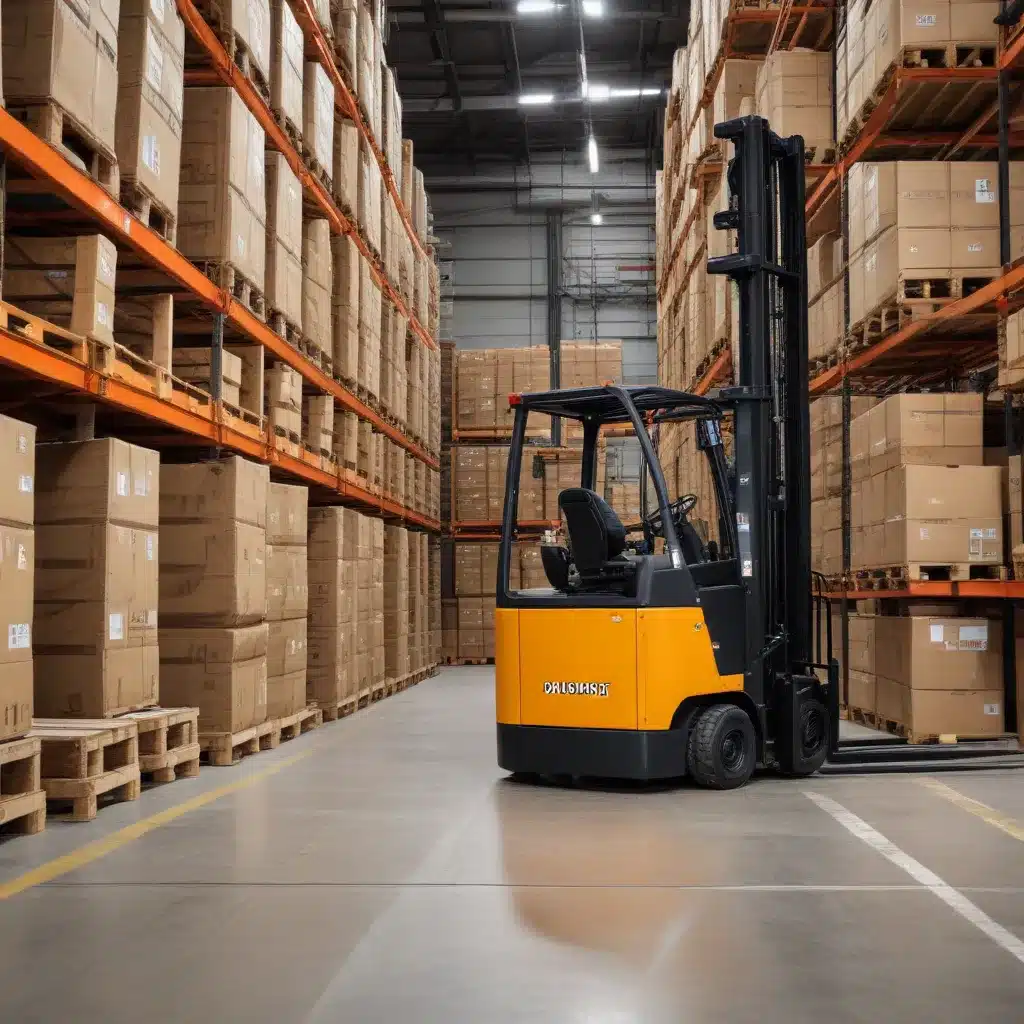
The Rise of Autonomous Forklifts: Transforming Warehouse Efficiency
In the dynamic world of material handling, the emergence of autonomous forklift technology has become a game-changer, revolutionizing the way warehouses and distribution centers operate. As industries grapple with labor shortages and the need to enhance operational efficiency, these intelligent machines are poised to redefine the future of logistics.
Autonomous forklifts, equipped with advanced sensors, artificial intelligence (AI), and machine learning capabilities, are leading the charge in optimizing warehouse workflows and mitigating the risks associated with manual operation. By leveraging these cutting-edge technologies, these forklifts can navigate complex environments, handle heavy loads with precision, and operate continuously without the need for breaks, driving significant improvements in productivity and cost-effectiveness.
Enhancing Precision and Safety: The Role of Advanced Forklift Technologies
One of the primary advantages of autonomous forklift solutions is their ability to enhance precision and safety in material handling operations. These forklifts are designed with a suite of advanced features, including:
Precision Load Handling: Autonomous forklifts are capable of precisely picking up, transporting, and depositing loads with a high degree of accuracy, reducing the risk of product damage and inventory errors.
Collision Avoidance: Equipped with an array of sensors, including laser-guided systems and advanced cameras, these forklifts can detect obstacles and pedestrians in their path, automatically adjusting their speed or trajectory to prevent collisions.
Operator Assist Capabilities: Many autonomous forklifts incorporate features that assist human operators, such as automatic speed control, automated braking systems, and operator detection technologies. These innovations enhance safety by mitigating the risks associated with operator error or fatigue.
Optimizing Workflows and Reducing Costs
In addition to the safety benefits, autonomous forklift solutions offer significant improvements in operational efficiency and cost savings. Key advantages include:
Continuous Operation: Autonomous forklifts can operate without the need for breaks, enabling uninterrupted material handling around the clock. This translates to increased productivity and faster order fulfillment.
Improved Asset Utilization: By optimizing routes and task completion, autonomous forklifts can handle more work per hour, maximizing the return on investment in warehouse equipment.
Labor Cost Savings: Automation reduces the reliance on human operators, allowing companies to reallocate personnel to other critical tasks and minimize the costs associated with hiring, training, and retaining skilled forklift drivers.
Maintenance Optimization: Autonomous forklifts can be programmed to perform preventive maintenance and diagnostics, reducing downtime and extending the lifespan of the equipment.
Seamless Integration and Adaptation
Integrating autonomous forklift solutions into existing warehouse operations can be a complex process, but leading manufacturers have developed innovative approaches to ensure a smooth transition.
Infrastructure-Free Navigation: Many autonomous forklifts leverage advanced localization technologies, such as laser guidance and GPS, to navigate the warehouse environment without the need for extensive infrastructure modifications. This streamlines the implementation process and minimizes disruptions to ongoing operations.
Flexible Deployment: Autonomous forklifts can be easily deployed in various warehouse layouts and can adapt to changes in the environment, ensuring that they can support evolving operational requirements.
Scalable Solutions: As the demand for automation increases, companies can gradually expand their autonomous forklift fleets to meet growing material handling needs, without the need for a complete overhaul of their existing systems.
The Future of Autonomous Forklifts: Continued Innovation and Adoption
As the material handling industry continues to embrace the benefits of automation, the future of autonomous forklifts looks increasingly promising. Industry leaders, such as Hyster, Yale, and others, are at the forefront of this technological revolution, offering robust solutions that address the pressing challenges faced by warehouses and distribution centers.
With the integration of advanced AI, improved sensor technologies, and seamless integration capabilities, autonomous forklifts are poised to become indispensable assets in the modern warehouse. As the adoption of these intelligent machines continues to grow, companies can expect to see significant improvements in safety, productivity, and cost-effectiveness, ultimately enhancing their overall competitiveness in the market.
Navigating the Transition: Key Considerations for Warehouse Operators
For warehouse operators considering the implementation of autonomous forklift solutions, there are several critical factors to consider:
-
Evaluate Current Operational Needs: Assess your warehouse’s material handling requirements, workflow patterns, and areas where autonomous forklifts can provide the most significant impact.
-
Assess Integration Feasibility: Evaluate the compatibility of autonomous forklift solutions with your existing warehouse infrastructure and management systems, ensuring a seamless integration process.
-
Address Maintenance and Training: Develop a comprehensive maintenance and training plan to ensure the efficient upkeep and operation of autonomous forklifts by your workforce.
-
Embrace a Gradual Adoption Approach: Consider a phased implementation strategy, allowing your team to adapt to the new technology and optimize its use over time.
-
Stay Informed on Industry Trends: Remain up-to-date on the latest advancements in autonomous forklift technology, safety regulations, and best practices to make informed decisions about your warehouse’s automation journey.
By navigating these considerations carefully, warehouse operators can unlock the full potential of autonomous forklift solutions, positioning their facilities for long-term success in the rapidly evolving material handling landscape.
Conclusion: Embracing the Future of Forklift Automation
The rise of autonomous forklift technology is undoubtedly a transformative force in the world of material handling. By enhancing precision, safety, and operational efficiency, these intelligent machines are redefining the way warehouses and distribution centers operate. As the industry continues to innovate and adapt, the adoption of autonomous forklift solutions will become increasingly crucial for companies seeking to maintain a competitive edge and deliver exceptional customer experiences.
By embracing the benefits of forklift automation, warehouse operators can look forward to a future of increased productivity, reduced costs, and enhanced safety – ultimately driving their businesses to new heights of success. The Forklift Reviews team encourages you to explore the latest advancements in this transformative technology and consider how autonomous forklifts can revolutionize your warehouse operations.

